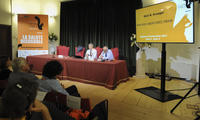
Italy and the United States have the two lowest labour force participation rates in the OECD; however, the causes of this low rate of particiaption are different for each country. Italy seems to be facing a labour demand problem, they have high unemployment rates and declining participation in the labour force. The United States has a labour supply problem; despite low and declining unemployment rates, there has been a decrease in the number of people who are participating in the labour force.
In the United States, ageing workers are leaving the labour force at a higher rate than previous years; while this may initially seem to explain the decrease in labour force participation, the elderly cannot fully account for the decline, making this a curious case. Prime-working-age men have been leaving the labour force in the US and their health may be the answer to why they have been leaving. This group reports high rates of pain medication usage, high rates of disability, and high rates of addiction to and usage of pain medications. Without addressing the problem of pain in the US, it is unlikely that the labour force participation rate will reverse its current trend, especially considering that women’s participation in the labour force has levelled out.
Italy does not have the same kind of problem with pain, health, and disability. Italy has seen a decline in rates of death caused by drug use, suicide and other methods that would indicate high-levels of drug use or emotional and physical pain. This data reinforces the idea that Italy and the US, while they have similar results, do not have the same problems that create a low participation rate in the labour force. The decline in Italy’s labour force participation still needs more investigation, but might be related to discouraged workers leaving the labour force after the economic crisis and the sustained high rates of unemployment.
The labour force participation rate can be an indicator of what is happening in society and with the economy. The labour force participation rate is calculated based on those who are working and those who are unemployed (currently searching for work), excluding people have become discouraged or voluntarily removed themselves from the labour force. This group of people who are not being accounted for can affect the economic tools used by governments in regulating the economy, thus affecting the current and future health of an economy.
Watch an interview with Alan Krueger on labour force participation: https://youtu.be/ah-wNTvh_Yc
Web: http://2017.festivaleconomia.eu
Twitter: @economicsfest
Facebook: https://www.facebook.com/festivaleconomiatrento










